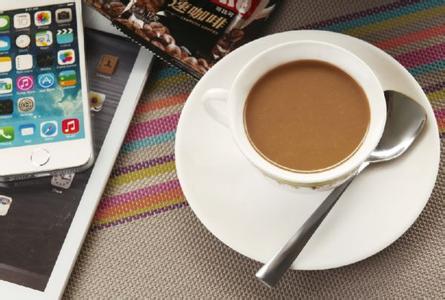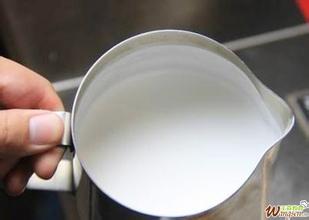What materials do I need to prepare for coffee flower drawing? What tools are needed for the production process
What materials do I need to prepare for coffee flower drawing? What tools are needed for the production process
The technology of coffee flower drawing
Coffee cups first need to make espresso and milk microbubbles with coffee fat, and then synthesize them into latte flowers.
Espresso must have enough fat on the surface before adding milk. When the white foam is poured into the reddish brown coffee, the sharp color contrast presents a creative pattern. After the milk is poured, the foam separates from the liquid and rises to the surface. If the amount of milk and espresso is "just right", the milk can moves left and right as it is dumped, and the foam rises and forms a pattern on the surface. Sometimes, a pattern can be drawn on the foam with a flower pin or stick, but not necessarily in the process of pouring.
There is a different view in the coffee community that baristas pay too much attention to the styling of lattes. The view is that we pay too much attention to the external image of coffee rather than fancy coffee itself, such as taste and other factors. This is even more important for novice baristas.
The types of coffee flowers
At present, there are two kinds of flower drawing widely used: "free dumping" and "carving". Free dumping is more widely used in American cafes, which requires more preparation time when making coffee.
Dumping
The most common patterns of toppling flowers are heart-shaped, rose-shaped and fern leaf-shaped. The heart shape is easier to make and is often used to make macchiato, while the rose shape is more complex and is often used to make lattes. More complex patterns are also possible, some of which need to be dumped several times.
Carved flowers
Carved patterns can range from simple geometry to complex paintings, such as three-dimensional shapes with shadows: animals, flowers, etc., and some patterns need to be fixed with a coffee blender. The life of the carved coffee is shorter than that of the dumping technique, because the foam breaks down faster.

Important Notice :
前街咖啡 FrontStreet Coffee has moved to new addredd:
FrontStreet Coffee Address: 315,Donghua East Road,GuangZhou
Tel:020 38364473
- Prev

How to use the golden cup criterion to judge whether the coffee is too good? Relationship between extraction rate and concentration of Coffee
Coffee extraction rate formula the most standard time calculation range Espresso single part 30ml, double part 60ml extraction amount almost no one will change, except for a few Italy will use a single serving of coffee powder but only extract 15ml coffee liquid American coffee (Americano). To put it simply, it is ESPRESSO to heat water. Generally speaking, one ESPRESSO for small cups and two for medium cups.
- Next

Description of Flavor of Water-washed Coffee and Solar Coffee Honey introduction of varieties produced by Grinding scale
Description of flavor of washed coffee, sun-dried coffee honey, grinding scale production area varieties of raw beans treated by drying method are yellow, and the water content of coffee beans is generally about 11% Mel 12%. The advantage is that sun beans have better sweetness and mellow thickness, and less sour taste, so many coffee fans like it very much. The disadvantage is that artificial and natural processing methods are used in the process, so
Related
- What is the meaning of lactic acid fermentation with coffee bean treatment?
- How to judge the state of foam by sound?
- How does the latte pull out the unicorn pattern? Come to get for a little trick to improve the flower pull!
- Will flower pulling affect the taste of the latte?
- Do you know the history of coffee?
- The difference between honey treatment and sun washing what is raisin honey treatment?
- What kind of milk can a novice use to make coffee foam to keep the foam longer? The correct method and skills of milking tutorial sharing
- Why do washed coffee beans taste sour? Flavor characteristics of washed Coffee
- Introduction to the skill of how to practice the size and height of water injection around the circle of hand-brewed coffee
- How do beginners practice coffee flower drawing from scratch?

